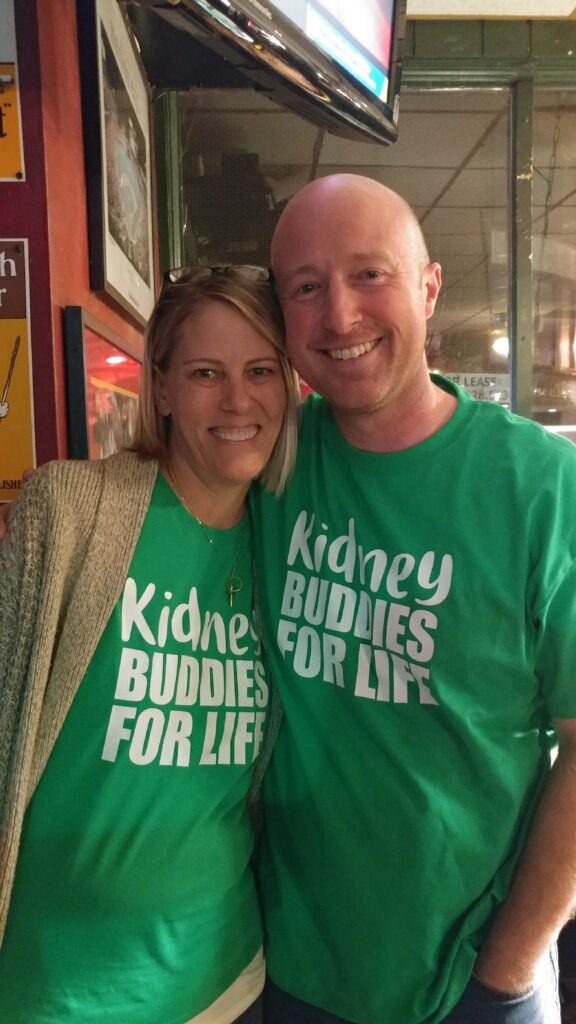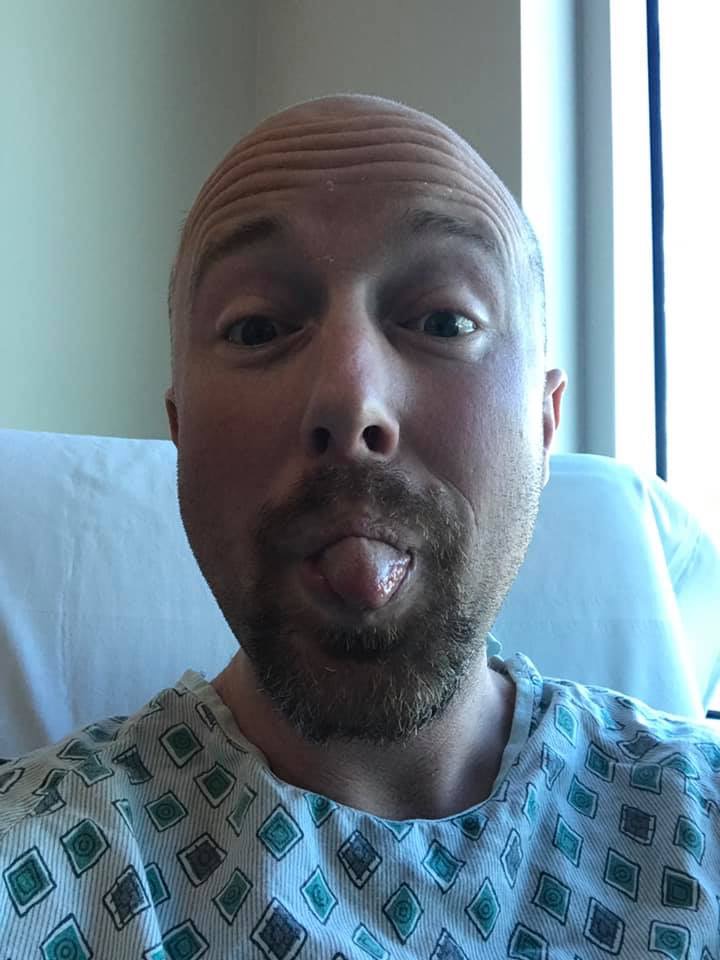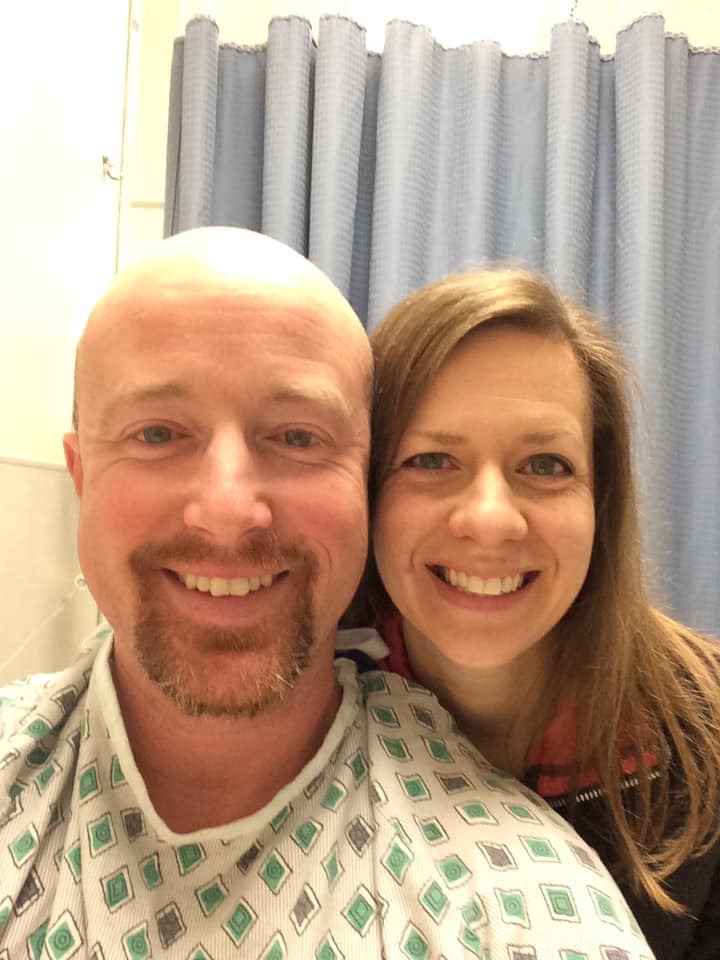Other People Matter: Principal Adam Erbrecht's Organ Donation
By Janene RitchieThis week’s example of the Other People Matter Mindset comes from one of our P2 Partner Schools. This past December, Adam Erbrecht, Principal at Liberty Middle School (in Fairfax County Public Schools), became a living kidney donor. To learn more about his experience, I asked him a few questions.
Janene Ritchie (JR): Adam, thank you so much for agreeing to share your experience as a living organ donor. Organ donation is a wonderful example to highlight during our last #OtherPeopleMatter Mindset week. Tell us about how this opportunity came about – what inspired you to undertake this selfless act, and what factors went into the decision to be a living organ donor?
Adam Erbrecht (AE): It was early in August before teachers were coming back to work. My admin team was informally chatting in our conference room when our itinerant Occupational Therapist came in looking distraught. She shared her battle with kidney disease which I had been unaware of and that she needed a place at work to add in a 4th daily treatment of self-administered peritoneal dialysis.
It is hard to explain, but in that moment, I just knew I was a match. Both my Assistant Principal and I offered to be tested and you had to first complete a check-list regarding health issues, which I passed. A few days later, I went to have blood drawn and was confirmed a match, requiring further testing. This began some very intense conversations at home with my wife.
I am confident that both my own personal faith as well as the recent focus on the Other People Matter Mindset through P2 helped inspire my decision to donate to someone outside my family and friends network. This was a fellow educator and someone in need who likely would not see the next year if something didn’t change soon. If not me, who else? All of her family was eliminated as donor options because they are genetic carriers for the disease.

Adam and his kidney recipient
JR: Can you walk us through the process of becoming a match?
AE: It starts with a health checklist – diabetics, heart, blood pressure, etc. Easy first step. Next is a blood test – still fairly simple, and it takes a few days for results. Then, I visit the transplant center for more in-depth health screening, including an EKG, lung x-ray, MRI, and an interview with a social worker. At any step along the way, you can back out and all the recipient knows is that you were not a match. Once this is all complete and comes back clear, you schedule the surgery.
JR: What thoughts were on your mind in the days and hours leading up to the procedure?
AE: I was really at peace with the decision, but I was certainly thinking about my family, especially my wife. The surgery was on December 26th and so I had a great distraction the day before surgery with the family on Christmas day. I was nervous and scared and woke up after surgery feeling like the luckiest guy on earth.
JR: What has the recovery process been like?
AE: I was in the hospital for two days. They get you up walking quickly. I would go visit my recipient down the hall. I stopped taking pain meds a week later, but didn’t drive until two and a half weeks later. Recovery for me took about 6 weeks total before being able to resume my work routine. I returned to work part days after 4 weeks, but should have probably not come back as soon. Honestly, full recovery was more like 8 weeks to where my energy was all the way back. Everyone is different. Some people have been known to run half marathons a few weeks later…that would not have been me!

Adam keeping up his humor during recovery.
JR: Did you learn anything about yourself through this experience that you didn’t know before?
AE: I learned that life is short and other people matter. I learned that my perspective needed to be reframed. I often stress over small details and little deals. All I have to do now is refer back to scars as reminders that the things I am worried about aren’t death or kidney disease. We can figure pretty much anything else out. It’s important to take the time to listen to other people’s stories. If I hadn’t been open to really listening to my recipient, this could not have happened.
JR: What role did your character strengths play in this process?
AE: My top character strength is fairness. I feel confident that is part of what caused me to donate because kidney disease is not fair. Why should I be healthy with an extra kidney I don’t need, and my colleague is not? Recovery required perseverance, perspective, and open-mindedness.

Adam and his wife Julianne on surgery day.
Adam’s goal in agreeing to share his story – and in turn, part of his recipient’s story – is to raise awareness that organ donation is doable and fills a huge need. Potential recipients can wait as long as 8 years to receive an organ – if they can wait that long. Right now there are 90,000 people waiting for a kidney.
Adam’s last message is this: “If donating is not the right choice for you, how else can you say yes to improving someone else’s life? Can you donate to support organ donation? I am proud to be a member of the kidney donation club and thankful to my family and friends for their support.”
Visit kidney.org for more information on how to get involved with kidney donation.


